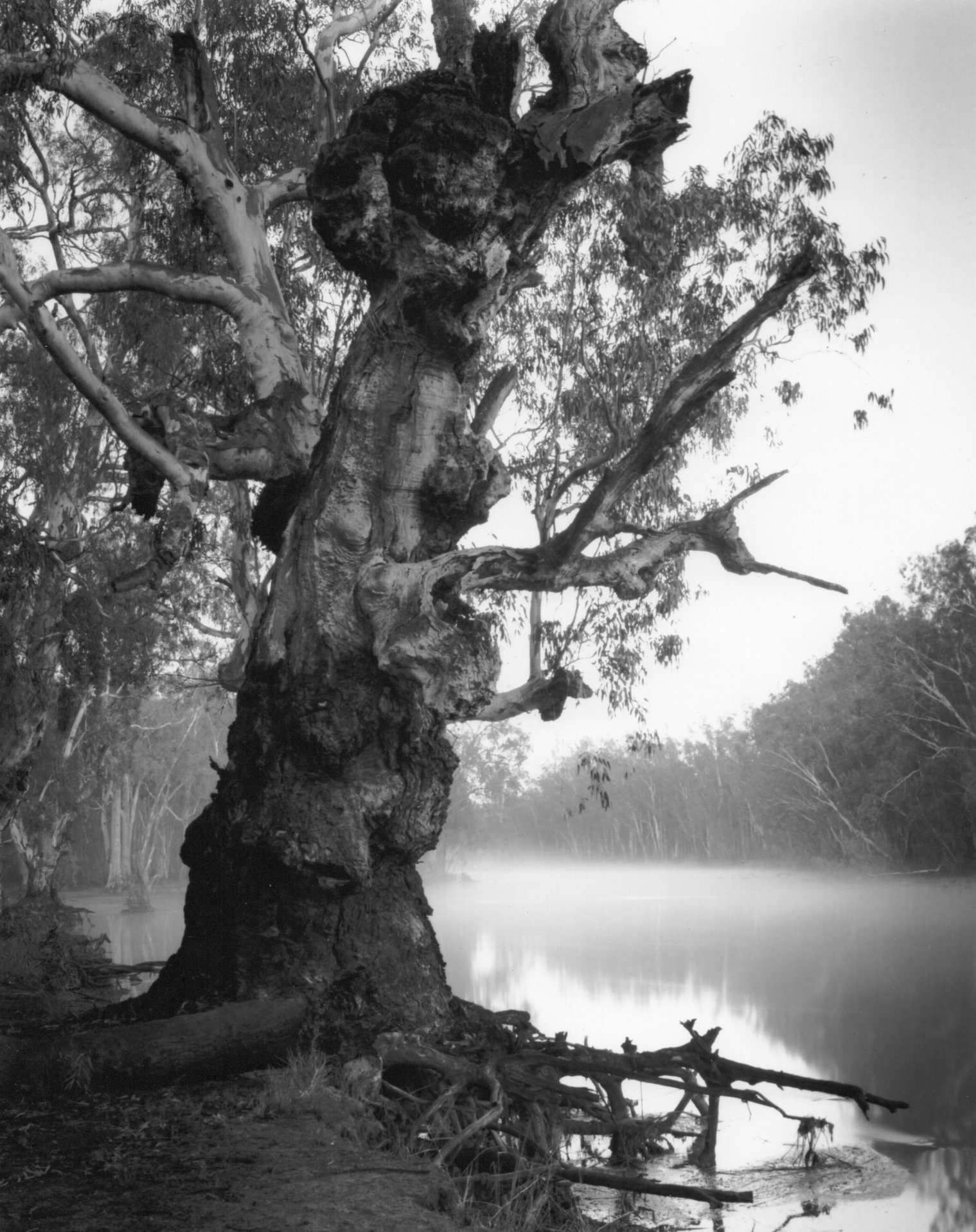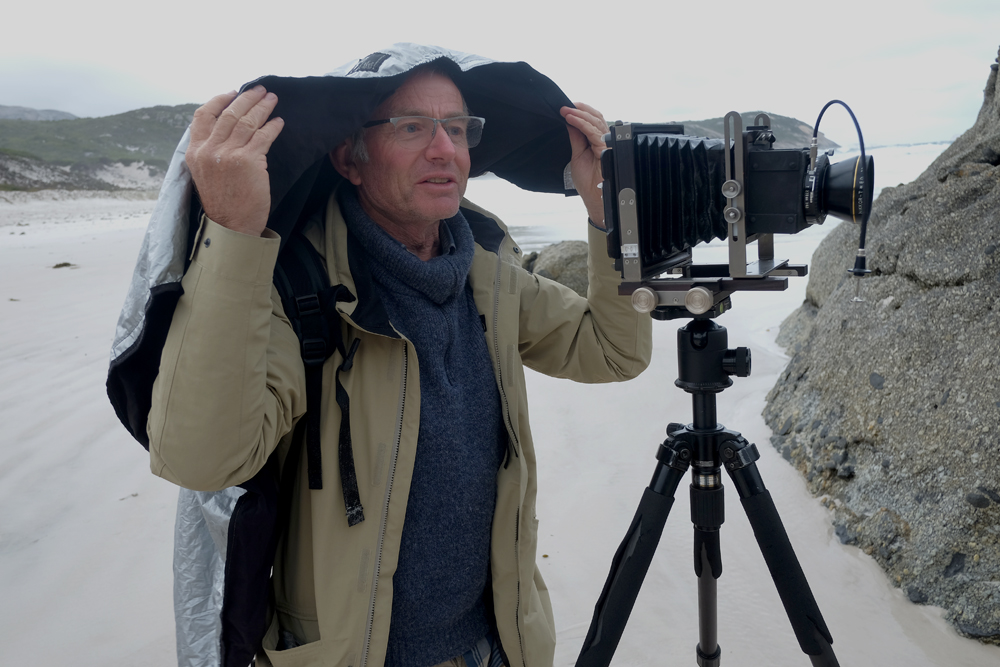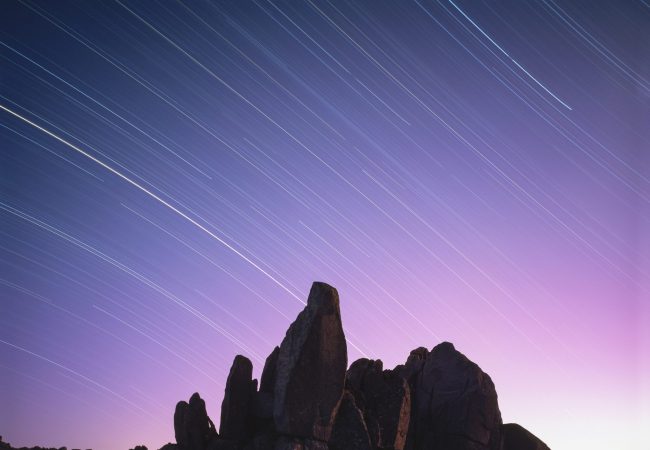Kiokio fern. Platinum palladium on vellum over silver leaf With…

The Photograph Considered number thirty eight – Murray White
The Minder. Silver gelatin photograph.
Three years ago, almost to the day, my interest in landscape photography became a passion. I should perhaps clarify that point – the passion is the landscape and photography is the mechanism by which I record it.
Prior to this moment, and for around 35 years, I travelled this country capturing many of its natural attractions on medium format transparency film. Exploring remote locations and seeing some remarkable landscapes was the buzz; taking the images was my way of holding on to that feeling.
I wrote of my experiences in various magazines over some years, using these images to illustrate the destinations. A number of 4WD guide books followed, but gradually my photography began to be driven by editorial requirements, rather than by the beauty of the natural landscapes that attracted me in the first place.
Worse was to come. I became disillusioned by the behaviour of those 4WDers who increasingly wished to treat the environment as a challenge rather than a destination. In addition, I enjoyed using film but felt removed from the process when there was a need to scan it for publication (or even to produce a print for that matter).
I considered the possibility of painting or sketching instead of photography, but there was one significant downside to that alternative – the need for reality. I like looking at unexpected details in the landscape, of exploring ambiguous subjects, of finding quirky juxtapositions of natural elements. I believe that these type of studies demand a medium that will be seen as authentic by the viewer. I would like the viewer to recognise that this work of Nature is not the result of human intervention or manipulation, but rather reality within the broader landscape.
So what happened three years ago? Well fate played its hand and I bumped into a large format enthusiast in the Kimberley, at a place called Galvans Gorge. He introduced himself as James, and commented that my Mamiya 7 was a lovely camera, but what did I do with it? I proudly told him that I shot landscapes on Provia film. “Then what?” he queried, drawing me closer to his trap. “Well these days I have to scan it of course” was my guarded reply. “What’s the good of that?” he responded, knowing I was now cornered and unable to provide any meaningful explanation from here. James’ words reinforced what I was already thinking.
Shortly after, James started to set up his beautiful 8 x 10 Ebony. I had heard of view cameras before, but never seen one in real life, so I thought to hang around for a few minutes to watch him take a shot. How naive I was. The process seemed to take ages, and had me wondering whether an on-site build was the norm for this type of photography. Once set up with a dark cloth, this contraption looked more like a personal bird hide than it did a camera, but it certainly had presence. Even other travellers frolicking around in the waterhole voluntarily offered to vacate the site when James was ready to take his shot.
Still more fumbling under the dark cloth, then James said “Take a look at the ground glass before I make an exposure”. What….he STILL hadn’t taken a shot! Anyway I poked my head under the dark cloth and was instantly taken by the clarity of image. Wow. “It’s upside down and reversed” explains James “I’ll be exposing a black and white negative, but will produce a platinum print from it”. “Wow” I repeated, not having a clue as to what he was talking about, but still mesmerised by the image. A pivotal moment for me.
A number of related happenings occurred on my return home. Fate kicked in again and I met Brian, a mate of James’ who lived half an hour from our house. Brian is one of the most enthusiastic ambassadors for monochrome that I have met, and he went out of his way to help me get acquainted with work in the darkroom. I purchased James’ old view camera and have since met many other dedicated B&W practitioners with their own sets of specialities and skills. Traditional B&W has me hooked totally as I began a new photographic journey. My wife tells me that I am going mad, my travelling friends think that I am on ice, and I am sure that Ilford has enjoyed a sales spike in Victoria.
Anyway, the above is just a preamble to the image presented here, although I think everybody’s current work is a product of their previous experiences. I spotted this character rich Redgum on the banks of the Murray River on one early morning walk. Predawn is my favourite time for photography with indirect lighting, subdued wind and only the birds for company. I think that my mind is more alert and open to possibilities in the morning also. Bewilderment and incoherence are more likely in the afternoon…
I love mature Redgums for their individuality – twisted and broken limbs, burls, mottled skin and grainy growths combine to form a living structure resembled by few other tree species on earth. This venerable tree stood on a complex root system, partially eroded, with quirky branches pointing in all directions for seemingly no reason in particular. Its most significant feature to me is its imaginary head looking pensively into the waterway. Curly hair and shadow filled eyes and mouth provide a human dimension to this image.
Although I take great care to exclude people, animals and signs of their existence from all of my images, I actively search for these ambiguous features in the landscape. Hopefully viewers will see these features and contemplate whether life within the landscape may indeed be more sophisticated than that which first meets the eye.
Rising mist on the river has softened the background, increasing the apparent separation between the foreground subject and its family. In terms of basic image creation, I used a 4 x 5 Ebony, 150mm lens, FP4 plus rated at 100ISO and developed in LC29. It is a straight uncropped print made at grade one to hold the necessary tree detail. I burnt the top right sky a little to balance the image with a little tone.
For those who may be interested in the idea of human concepts being visible in the landscape, I have an article in the current issue of Better Photography (Spring 2020). There will be a follow up piece in the next issue (Summer 2020). The magazine cover price will make your eyes water, but at least it only comes out quarterly…..The interesting thing about selecting prints for these magazine articles, is that they mostly have been the result of field trips with the Friends of Photography Group. David we are all itching for some great outings in 2021!
More of Murray’s work can be seen on his website.
Murray’s work is currently on exhibition at Focal Point Gallery & Darkroom in Geelong, Victoria.

Next Post: West Coast Granite Photography Workshop
Previous Post: Michaels film processing lab to close.




Murray, good to read your story about how you got into large format photography. Great photograph, River Red Gums are a specular tree.
That’s a beautifully written article and splendid photograph, Murray! Who hasn’t been ‘trapped’ in some way by James and Brian? But what glorious traps to fall into…
Congratulations on making a beautiful image Murray, ironically by the Murray. Best of luck with exhibition if it runs in mid 2021 maybe l will see it..
Good article Murray. I’m now 75 years old and started photography at about age 14 growing up on a farm in northern NSW, using my mother’s Box Brownie. I also subscribe to the Friends of Photography Group and constantly read articles and follow links from their site. As a result of your article I’ve now subscribed to Better Photography for 2021.